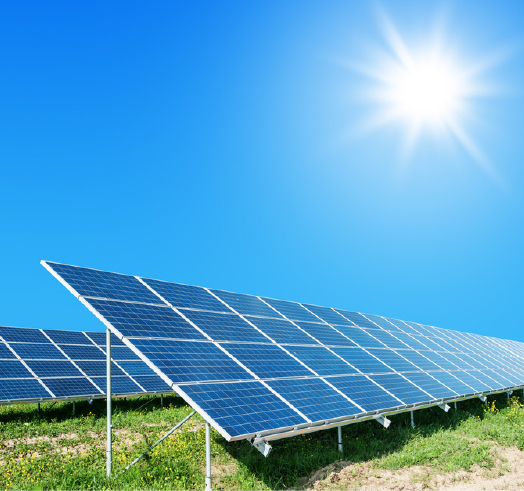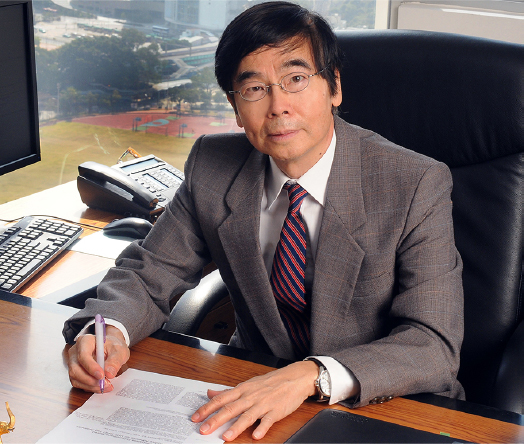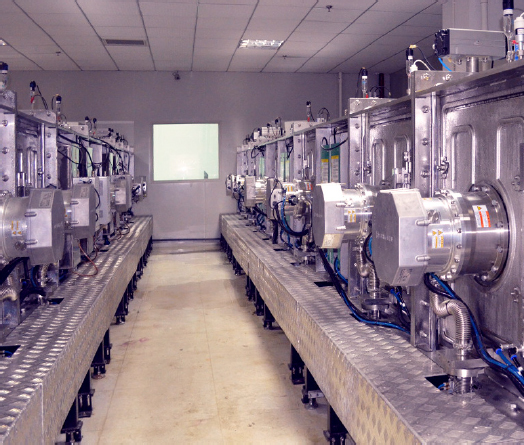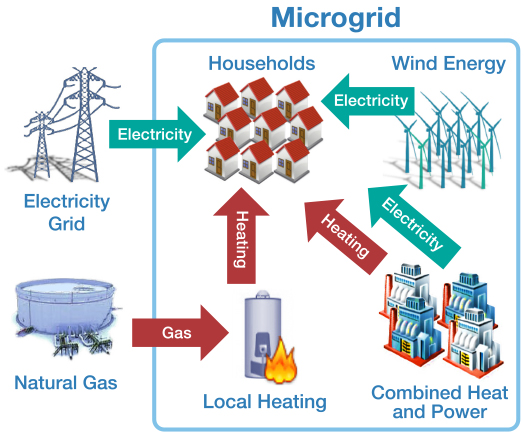
Smart Use of Energy
As demands for energy grows and the effects of global climate change becomes more acute, the need to replace traditional fossil fuel with alternative energy sources that are both clean and renewable also becomes more urgent. Harvesting energy directly from sunlight is a popular way to have a clean and sustainable energy source.
Research Led by Dean of Engineering
Prof. Wong Ching-ping, Dean of Engineering at CUHK, is leading a team of researchers from CUHK, HKUST and HKPolyU to study how to collect and distribute solar energy in the most effective way. In line with the strategic priorities set by the HKSAR Government and the Research Grants Council, the proposed research project, entitled 'Smart Solar Energy Harvesting, Storage, and Utilization', studies how to sustainably utilize solar energy using new technologies that will enhance efficiency and security, while keeping the cost affordable.
Prof. Wong believes that the project will strengthen Hong Kong's competitive advantage in solar energy technologies and also help to increase solar energy use throughout the territory. This project will focus on (1) high performance vacuum deposited thin photovoltaic (PV) cells and modules, (2) solution-processed excitonic solar cells, and (3) alterative solar harvesting technologies based on photosynthesis, photocatalysis, and thermoelectric processes.
PV Cells and Modules
A photovoltaic (PV) cell converts sunlight directly into electricity. A module is a group of cells connected electrically and packaged into a frame (commonly known as a solar panel), which can then be grouped into larger solar arrays. PV cells are made of semiconductor materials such as silicon. When light strikes the cell, a certain portion of it is absorbed within the semiconductor material. The light energy knocks electrons loose, thus allowing them to flow freely. In the new design, the vacuum-deposited thin-film PV cells produces a higher output covering a larger area than the conventional silicon-based PV cells, at a lower cost.


Solution-processed Excitonic Solar Cells
Excitonic solar cells are devices that produce electricity from solar energy through the creation of an 'exiton', which is an electronic-hole pair. When a photon (a particle of light) hits the light-active component in an excitonic solar cell, a negatively charged electron is excited to higher energy. A positively charged 'hole' is therefore also created on the molecule at the point where the electron is now absent.
The advantage of exitonic solar cells over conventional solar cells, such as those made of silicon, is that in a conventional solar cell, the excited electron and its corresponding hole are immediately separated and can easily travel away from each other, while in the exitonic solar cells, the electronic-hole pair are bounded tightly together and cannot travel far without recombining (thus losing energy). Solution-processed exitonic solar cells are those that are developed using liquids that contain semiconductor nanoparticles, and is produced at a relatively low cost.
Alternative Solar Harvesting Technologies
In addition to capturing sunlight directly via PV cells, the study will also explore alternative solar harvesting technologies based on photosynthesis, photocatalysis, and thermoelectric processes. Photo catalysis is the acceleration of this energy conversion process using a catalyst; and thermoelectric processes are processes that directly convert temperature differences to electrical voltage and vice versa. The study will utilize metal oxides and chemical dyes as catalysts in an artificial photosynthesis process that develops cost effective materials capable to produce electricity from solar light.
Smart Storage and Distribution
In addition to harvesting solar energy, the project also studies the storage of such energy. The study will focus on high-energy redox flow batteries, high-power super capacitors and a hybrid system formed by these two components. By exploring new materials and new processing approaches, the study aims to develop a hybrid system that will provide a more secure storage for the energy.

With enhanced harvesting and storage of solar energy, the project will utilize micro grids (MG) as a promising platform for effective solar energy utilization. Using advanced technologies and strategies to integrate and manage information and communication, these 'smart' grids are more reliable, flexible, and efficient. The research will monitor and manage the utilization as well as the security of these grids.
An Integrated Intelligent System
The project will not only create an interdisciplinary research platform for studying solar energy, harvesting, and utilization, but will also advocate applied research that leads to technology transfer to industry. By combining the aforementioned technologies, the project will deliver a practical demonstration of micro grid (MG) operations based on intelligent control and integration of PV modules, smart storages and loads and other technologies in a laboratory and selected campus building systems under interconnected and islanded modes. This demonstration will eventually be shared outside of academia with an eye towards industry application, and in turn promote a wider user of solar energy in Hong Kong.


